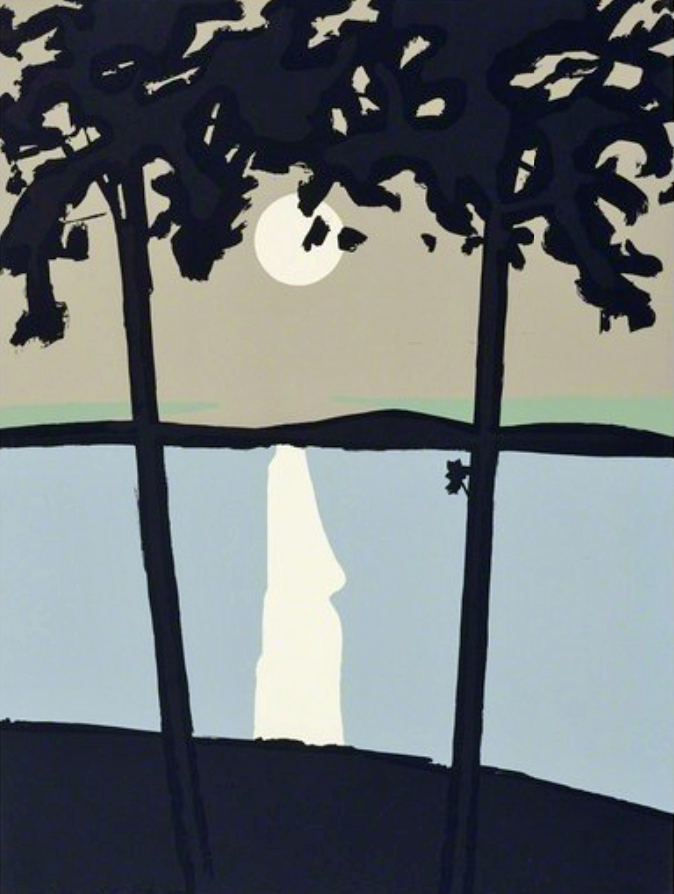
DEPTH AND SURFACE: Is painting, like art itself, a presentation of the “on top,” obvious, immediate?—and is it also a presentation of what is implied, deep, “below”?—and is art, consequently, an interplay of surface and sensation as “this” and depth and thought as “all that”? —Eli Siegel, from Is Beauty the Making One of Opposites?
In Alex Katz’ wonderful landscape, Luna Park, two slanting, black trees are silhouetted against a lake of cool gray and a warmer gray sky. Amid a freely rendered black canopy of leaves, we see a round, white moon. Below, the vertical, curving reflection of the moon on the water joins the black shore in the foreground and the opposite shore, leading us into depth.
Above the low, dark, undulating hills of that far shore, a fifth color—a pale green, like a rising mist, is barely distinguishable from the sky. And emerging from the trunk of the tree on the right, a little sprig—one black leaf—seems to reach up to the shore in the distance.
Boldly simple as this scene appears, it conveys yearning, mystery. What Eli Siegel described as, “The ‘on top,’ obvious, immediate, and the implied, deep, ‘below,’” are indivisible here. And doesn’t the contrast of those carefully chosen, large, flat areas of color give that ungraspable, subtly strange feeling one can have on a night with a full moon? Through color and form the artist shows the world as deep and immediate at once. Aesthetic Realism showed me this is how I want to see—to be fair to the world’s alluring surfaces and to its mysterious depths. —Carrie Wilson